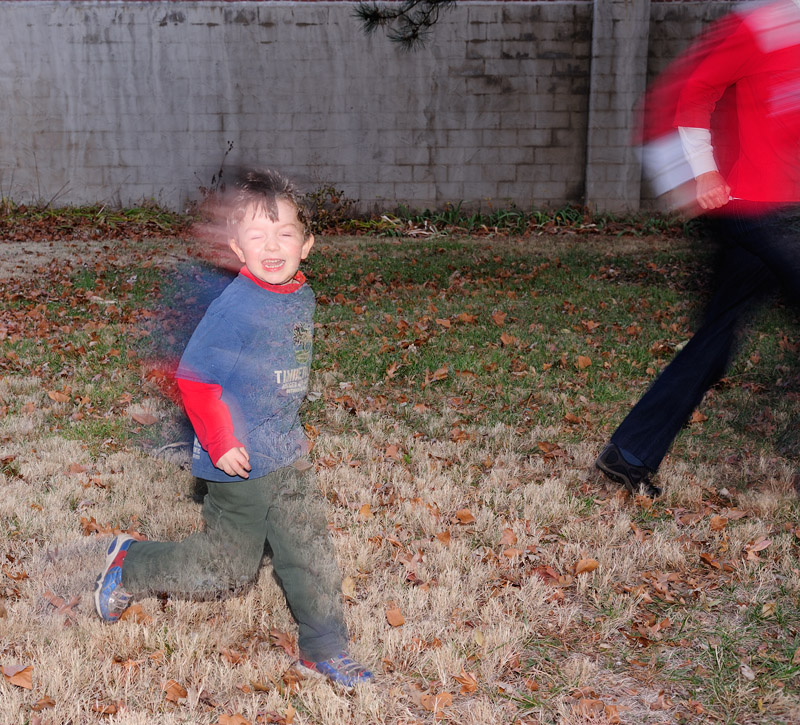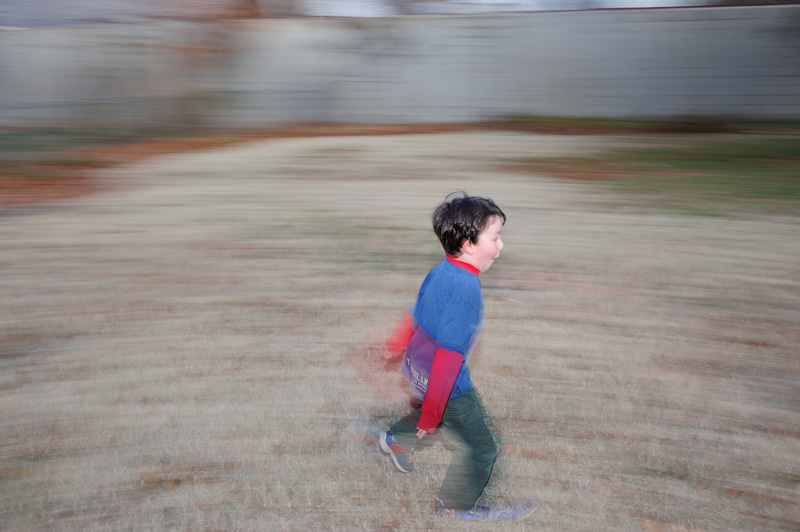"Slow Sync" refers to a flash mode on most cameras that will allow you to use a flash in conjunction with a slower shutter speed. The normal "default" for most cameras is to use a faster shutter speed in conjunction with flash. This is the "safe" method that will ensure handheld shots aren't blurry. There are often situations however when using a faster shutter speed will result in the ambient exposure on the background being too dark, resulting in your subject looking like it is in a dark tunnel. One way to balance the ambient exposure on the background with the light from the flash is by bumping up our ISO. This will result in a brighter background, and the camera will compensate for the greater light amplification (higher ISO) by lowering the power output of the flash, therefore better balancing the exposure on the subject and the background. Nothing comes for free though, and bumping up the ISO will result in more amplification of the digital noise and will also reduce the dynamic range that can be captured by the camera.
If the use of a tripod is possible, it is often better to stick with a lower ISO and adjust the background exposure by using a longer shutter speed. Remember that as long as we are shooting at a shutter speed that is
slower than the maximum sync speed of our camera, then shutter speed will not affect the exposure from the flash. (The flash pulse is much shorter than 1/250th of a second, so any shutter speed longer than 1/250th of a second will result in the same amount of light from the flash hitting the subject. The flash pulse stays the same, it is just contained within a longer ambient exposure.) In order to bring the darker background into better balance with the foreground we can adjust our exposures to use a longer shutter speed, allowing more ambient light from the background to be collected by the sensor. So in it's simplest form, that's what "slow sync" is all about.
There is however, another setting on your camera that interacts with the "slow sync" setting and can be used to create different effects. Remember that with "slow sync" flash, the flash pulse is happening during a fraction of the overall exposure time. Typically the flash will fire at the
beginning of the exposure, and the shutter will stay open for the remainder of the ambient exposure time. This is called "front curtain sync" (because the flash is synced to the opening of the "front" shutter curtain). So lets imagine then that you are photographing a moving object. The flash will illuminate the subject in the foreground, and then after the flash dies down you will still have some remaining ambient exposure on the subject as it moves through the frame. This will result in a sharply defined subject with "streaks" of movement in front of the subject, which is exactly the opposite of how we normally portray fast movement. Normally we portray a fast moving object with streaks of color behind the subject, with the sharply defined subject in front of the motion blur. This better portrays our understanding that the subjects movement will have created a blurred motion where it has
been, not where it is going.

In order to do this, we need to fire the flash at the end of the ambient exposure, and to do this we select the "rear curtain sync" option on the flash.
I should preface my image example by saying that getting all this to work properly, with properly balanced exposure on both the subject and the background and the proper length of shutter speed to show an appropriate amount of blur based on the speed of your subject, is quite a challenge. My challenge was further exacerbated because I forgot that I had exposure bracketing set, and by the time I figured out why my (manually set) exposures were varying so wildly, my subject was getting tired and uncooperative.

Here's one example of how slow sync can be used with the rear sync setting to convey a sense of movement. Here's Evan "streaking" in front of the camera. The streaks of motion blur are from the ambient exposure, and the sharply defined portion of Evan is from the flash exposure. I caught a part of Rebecca leaving the frame, which is good, because the combination of blurred movement and sharply defined "leading" portion of Rebecca's arm is a good illustration of the effect I was looking for.

1/15 sec, f8, ISO 640, TTL balance fill flash, dusk light
Slow (rear curtain) sync can also be used in conjunction with panning to convey a sense of motion, as in the following example:

1/15 sec, f8, ISO 200, TTL balance fill flash, late afternoon overcast light
Because it can be so challenging to balance all of the parameters (foreground to background exposure, shutter speed vs aperture vs ISO vs flash power, speed of your subject, etc.) I thought this would be a good topic for a 2-week assignment. That will give you time to experiment with various settings in different lighting conditions.
The assignment for 13 - 27 December is "Slow Sync." You can submit simple slow sync images that use a slow shutter speed to balance a flash-lit foreground with an ambient background exposure, or you can submit more challenging images that use slow sync in conjunction with rear curtain sync and subject movement to convey a sense of motion in your image. Please upload your images to the "Slow Sync" album in the weekly assignments category of the gallery no-later-than midnight, Mountain time (GMT -07:00) on
Monday, 27 December 2010.
I'll look forward to seeing your images. Have fun!!
Keith